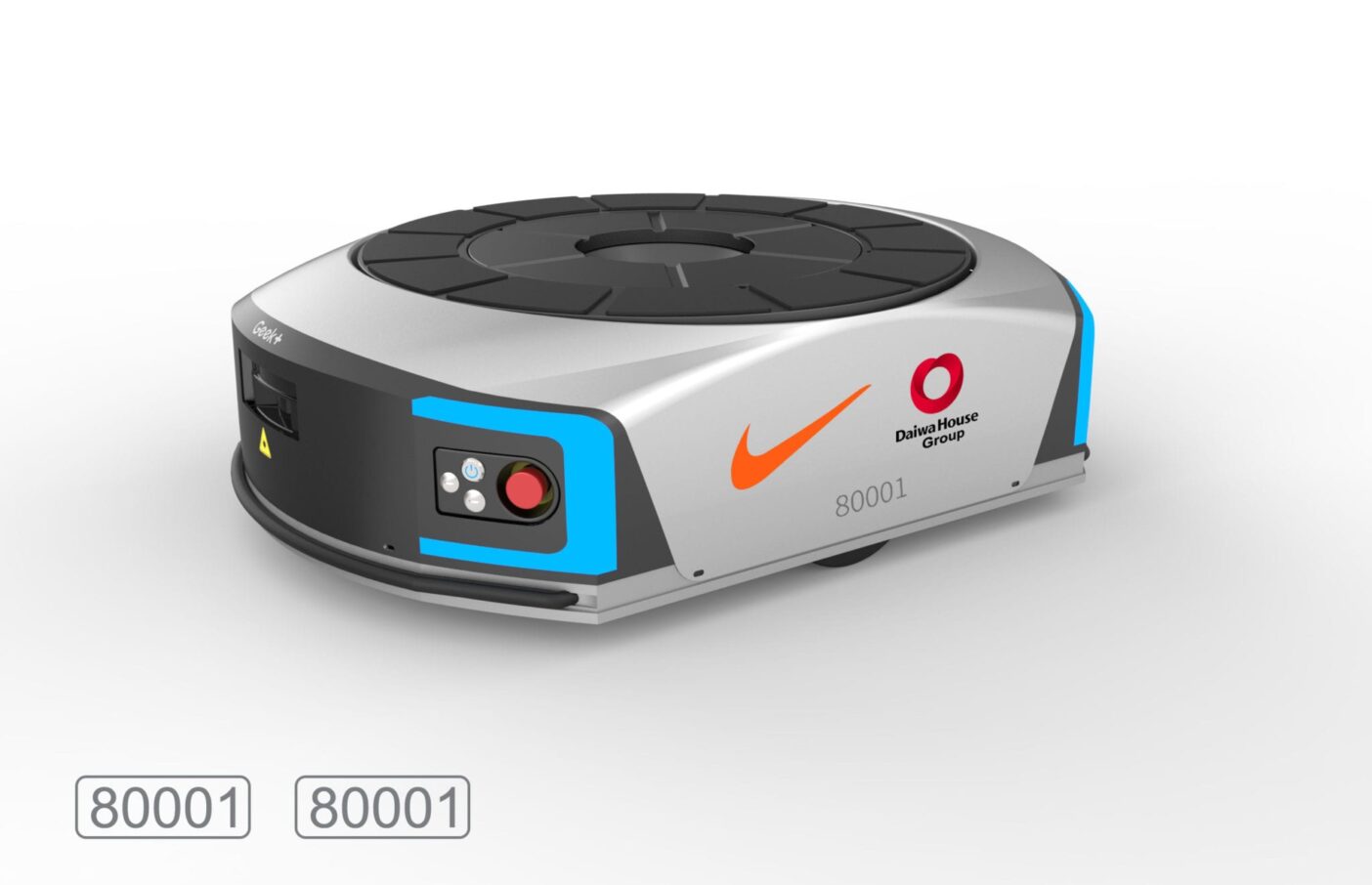Why Nike Shoe Manufacturing Remains A Challenge For Robots

Table of Contents
The Dexterity and Precision Hurdle
The intricate nature of shoe manufacturing poses a significant hurdle for robotic automation. Current robotic systems, while improving rapidly, still lack the dexterity and precision needed for many crucial steps in the production process.
Complex Assembly Processes
Assembling a shoe involves numerous delicate and complex steps, including:
- Stitching: Precisely stitching together various materials like leather, synthetics, and textiles with varying thicknesses and textures requires a level of fine motor control and adaptability that robots currently struggle with.
- Gluing: Applying glue consistently and accurately without excess or spillage is crucial for a durable and aesthetically pleasing finish. The varying geometries of shoe components make this a challenging task for robots.
- Component Assembly: Precisely aligning and attaching the sole, upper, insole, and other components requires a high degree of dexterity and force control. The variations in size and design across different shoe models add further complexity.
- Lacing: While seemingly simple, consistently and efficiently lacing shoes presents unexpected challenges for robotic systems.
The need for adaptability to different shoe models and sizes, each with its unique construction and material composition, further complicates the automation process. Precise robotic manipulation and dexterous robots are crucial, but current technology falls short of the needed flexibility. This requires advancements in assembly automation and flexible automation solutions.
Material Handling Challenges
Another critical challenge lies in handling the diverse materials used in shoe manufacturing. Robots struggle with:
- Gripping: Securing a firm grip on materials with varying textures, thicknesses, and shapes (e.g., smooth leather versus textured fabric) without causing damage is difficult. Adaptive gripping mechanisms are essential but still under development.
- Feeding: Consistently feeding materials into the assembly process without jams or misalignments requires sophisticated sensing and control systems.
- Positioning: Precisely positioning materials for stitching, gluing, or assembly is crucial for quality and efficiency. This requires advanced vision systems and precise robotic control.
The risk of damaging delicate materials during handling adds another layer of complexity. Developing material handling robots with adaptive gripping and flexible robotic systems capable of handling a wide range of materials is a crucial step towards automating this aspect of shoe production. The field of soft robotics offers promising avenues for addressing these challenges.
The Cost and Economic Feasibility Factor
Beyond the technical hurdles, the economic feasibility of robotic automation in Nike shoe manufacturing presents a significant barrier.
High Initial Investment
Implementing sophisticated robotics systems for shoe manufacturing involves a substantial upfront investment:
- Robot Cost: Advanced robots with the required dexterity and precision are expensive.
- End-Effectors: Specialized end-effectors (the tools attached to the robot's arm) for handling different materials and performing various tasks add significant cost.
- Programming and Integration: Programming robots for complex tasks and integrating them into existing manufacturing infrastructure require skilled engineers and substantial time, increasing costs.
A thorough return on investment (ROI) analysis is crucial before committing to such significant automation cost. The high initial robotics investment needs careful consideration of the cost-benefit analysis.
Ongoing Maintenance and Programming
The ongoing costs associated with maintaining and updating robotic systems further impact economic feasibility:
- Maintenance: Regular maintenance, repairs, and calibration are necessary to ensure optimal performance and prevent downtime.
- Skilled Technicians: Specialized technicians are needed to maintain and repair these sophisticated systems.
- Software Updates: Software updates and upgrades are crucial to improve performance and address potential bugs, representing ongoing programming costs.
The potential for downtime due to maintenance and repairs adds to the overall robotics lifecycle costs and significantly impacts productivity.
The Need for Adaptive and Versatile Robots
The success of robotic automation in Nike shoe manufacturing hinges on the development of adaptive and versatile robots.
Adaptability to Different Shoe Models
Nike produces a vast array of shoe models, each with its unique design, materials, and assembly process. Robots must be able to adapt quickly and efficiently to these variations:
- Reprogramming: Current robots often require extensive reprogramming and retooling when switching between different shoe models, adding to downtime and cost.
- Design Variations: Variations in material, stitching patterns, and assembly processes across different shoe styles demand highly adaptable robotic systems.
Adaptive robots and reconfigurable robots are needed to streamline transitions between different production runs. Flexible manufacturing systems that can easily adapt to changing demands are key to economic viability.
Handling Variability in Production
Real-world manufacturing environments are inherently variable:
- Material Quality: Variations in material quality require robots capable of handling inconsistencies without compromising quality or speed.
- Worker Skill Levels: Robots need to be robust enough to cope with variations in worker skill levels during manual processes that remain in the production line.
- Production Rates: Robots should adapt to fluctuations in production rates without impacting overall efficiency.
Robust robotics, fault-tolerant robots, and intelligent automation strategies are crucial for successful implementation. Predictive maintenance strategies can also minimize downtime and optimize robot performance.
Conclusion
The challenges facing robotic automation in Nike shoe manufacturing are multifaceted: the dexterity and precision required for complex assembly, the high cost and ongoing maintenance of sophisticated robots, and the need for adaptability to different shoe models and variations in production. While robotic advancements are continuously being made, fully automating this complex process remains a significant hurdle. The future of robotics in manufacturing, specifically Nike shoe automation, depends on significant breakthroughs in these areas. Advancing robotics technology to address these challenges will be crucial in achieving widespread automation in this industry. We encourage further research and development in adaptive gripping, flexible automation, and AI-powered robotics to unlock the potential of automation in shoe manufacturing. Share your thoughts and insights on how we can overcome these challenges and propel the advancement of robotics in this field!

Featured Posts
-
 Harvard Faces 1 Billion Funding Cut Exclusive Report On Trump Administrations Ire
Apr 22, 2025
Harvard Faces 1 Billion Funding Cut Exclusive Report On Trump Administrations Ire
Apr 22, 2025 -
 1 Billion Funding Cut Exclusive Look At Trumps Harvard Dispute
Apr 22, 2025
1 Billion Funding Cut Exclusive Look At Trumps Harvard Dispute
Apr 22, 2025 -
 How Is A New Pope Chosen A Comprehensive Guide To Papal Conclaves
Apr 22, 2025
How Is A New Pope Chosen A Comprehensive Guide To Papal Conclaves
Apr 22, 2025 -
 Trump Administrations 1 Billion Cut To Harvard Funding Amidst Growing Conflict
Apr 22, 2025
Trump Administrations 1 Billion Cut To Harvard Funding Amidst Growing Conflict
Apr 22, 2025 -
 South Sudan And The Us To Coordinate Deportees Return
Apr 22, 2025
South Sudan And The Us To Coordinate Deportees Return
Apr 22, 2025
